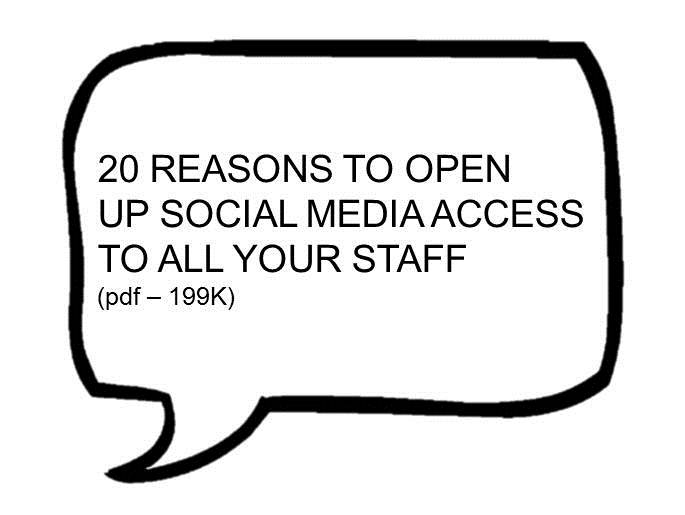 Wednesday, September 3, 2014
Wednesday, September 3, 2014 16 gems to help you start to understand internal comms

 Internal comms can often be the Cinderella part of PR and communications. It's often undervalued. But big schemes that need to be communicated well need to start with engaged and informed staff. There's a report that has stood the test of time is a good place to help start your understanding.
Internal comms can often be the Cinderella part of PR and communications. It's often undervalued. But big schemes that need to be communicated well need to start with engaged and informed staff. There's a report that has stood the test of time is a good place to help start your understanding.
by Dan Slee
Here’s a confession. It wasn’t until long into my career in communications that I realised the value of internal comms.
I used to stupidly think internal comms person was when you failed at being a press officer. There I’ve said it.
I couldn’t have been more wrong.
It wasn’t until I drew-up a big report on budget consultation that I went away and researched it that I saw why it was so important. I now think you need to put one of your best people doing it because if the staff don’t understand where you are headed and why you are heading there brother, you are in for a big fail.
Any kind of project but especially a change or transformation project needs to have engaged and informed staff not as a woolley nice to have but as a hard-headed essential thing.
Your communications should include what is called 'employee engagement'. The better it is the better the chance of success.
What is internal comms?
That’s things like the intranet, the all staff email, the weekly bulletin and the face-to-face briefing. All levers that can be used to try and talk to your employees. As the saying goes, if the people behind the counter aren’t enthusiastic about the apples you won’t sell many of them. But internal comms absolutely isn’t just for the internal comms officer or the IT person who looks after the intranet although they may have to play the cheer leading role.
What is employee engagement?
Sure, internal comms is a big part of it but employee engagement is the encouraging of opportunities for employees to connect with colleagues, managers and the wider organisation.
What is the MacLeod Report?
Back in 2008, the Secretary of State for Business commissioned David MacLeod and Nita Clarke to write a report on the value of internal communications. Or, rather as they describe it, ‘employee engagement.’ I would suggest anyone who is interested in communicating should read it and you can find a link to it here. The report was hugely influential and led to a voluntary movement loosely tagged ‘Engage for Success’ to promote its work.
Reading it for the first time it was a revelation. Here are some key points you need to know.
16 gems from the MacLeod Report
Some theory
- There is a clear link between how well you communicate with staff and how well you do as an organisation.
- ‘At its core is a blindingly obvious but nevertheless overlooked truth. If it is how the workforce performs that determines to a large extent whether companies or organisations succeed then whether or not the workforce is positively encouraged to perform at its best should be a prime consideration for every leader and manager and placed at the heart of business strategy.’
- ‘Employee engagement enables adult two-way relationship between leaders and managers and employees where challenges can be met and goals achieved.’
- ‘As our public services face the reality of an end to the years of rapid growth in investment it is hard to see how the quality of service we all aspire to see – employees and citizens alike – can be achieved without putting the enthusiasm, commitment and knowledge of public service employees at the forefront of delivery strategies.’
- ‘Many company leaders described to us the ‘light-bulb moment’ when an understanding of the full potential significance of employee engagement dawned.’
- ‘In the words of EEF, the manufacturer’s organisation: ‘It will be hard to get through the recessin without engaging your workforce.’
- ‘Engaged employees freely and willingly give discretionary effort not as an ‘add on’ but as an integral part of their daily activity at work.’
- ‘Engagement is two way: organisations must work to engage the employee who in turn has a choice about the level of engagement to offer the employer. Each reinforces the other.’
Some data
- A Gallup study of 23,910 businesses in 2006 showed that organisations with low employee engagement saw up to 51 per cent more staff turnover and 62 per cent more accidents while those who had good engagement had growth rates 2.6 times that of the below average.
- ‘Both Sainsbury’s and O2 believe their recent growth has been predicated on a transformation of their approach to their workforce based on highly developed engagement models.’
- ’70 per cent f engaged employees indicate they have a good understanding of how to meet customer needs only 17 per cent of non-engaged employees say the same.’
- ‘Engaged employees advocate for their company or organisation 67 per cent against 3 per cent of the disengaged.’
- Engaged organisations grew profits three times as fast as competitors in a Corporate Leadership Council study.
- Employees who are engaged generate 43 per cent more revenue than disengaged, Hay Group say.
- Towers Perrin say that 78 per cent of engaged employees in the public sector say they can make an impact on public services as opposed to 29 per cent of the disengaged.
- An Ipsos Mori study says that staff in better performing councils are are likely to have more engaged advocates.
Dan Slee is co-founder of comms2point0.















Reader Comments (1)
Dear Dan
Nice to see you are slowly catching up on the critical discipline that is Internal Communications. Don't let Rachel Miller of All Things IC hear you describing it as a Cinderella service!
Apart from all the good business reasons to invest in IC you quote above, let me add 1 more. A high % of your employees probably also live in your patch - HR will have this data and should be persuaded to share. So if it is important to your organisation to engage with residents, why not make a good start by engaging with those residents you have easy access to, the ones that work in the same building? Just a thought.
Best wishes
Jenny